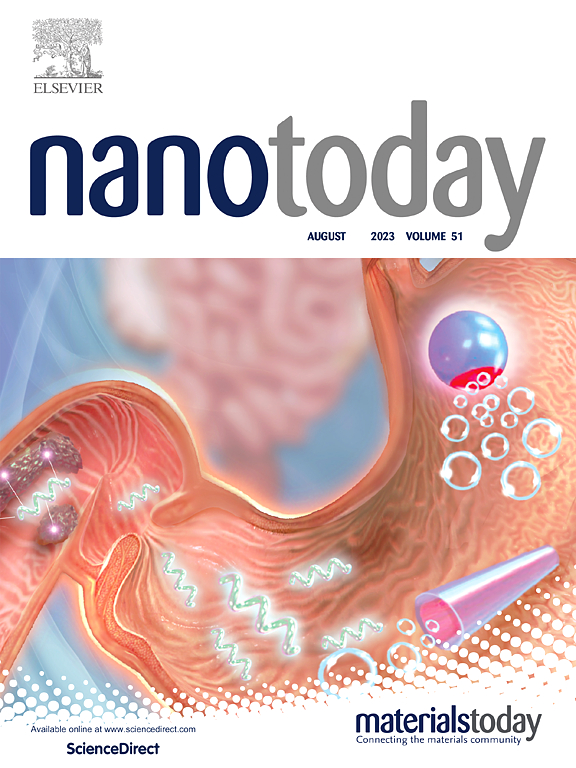Photothermal H2S generation promotes the function restoration of spinal cord from acute injury
IF 13.2
1区 材料科学
Q1 CHEMISTRY, MULTIDISCIPLINARY
引用次数: 0
Abstract
Spinal cord injury (SCI) refers to either a temporary or permanent damage to the spinal cord caused by external forces, which frequently leads to the acute or sustained impairment on the motor and sensory functions of spinal cord and several chronic systemic complications. Current clinical interventions fail to meet the therapeutic needs in a satisfactory way due to the limited efficacy associated with the blood-spinal cord barrier (BSCB). Here, we propose a strategy for the treatment of spinal cord injury (SCI) using a NIR photothermal-controlled release gas nano-generator based on silicene (SNS) nanosheets. This nano gas-generator greatly promotes nerve regeneration attributing to the physiological effects of H2S, including the inhibition on inflammation and oxidative stress, protections of nerve cells from the injury, promotion of neuron formation and reduction of glial scar formation. The results show that H2S-generator is capable of reducing the expressions of activated microglia macrophages and pro-inflammatory cytokines via the NF-κB pathway in SCI mice, which significantly promotes the axon regeneration and functional recovery after SCI. The sustained effectiveness of the generator in the repair of SCI offers a promising prospect in the treatments of a range of neuro-degenerations in addition to spinal cord injury, such as Parkinson's disease and Alzheimer's disease.
求助全文
约1分钟内获得全文
求助全文
来源期刊

Nano Today
工程技术-材料科学:综合
CiteScore
21.50
自引率
3.40%
发文量
305
审稿时长
40 days
期刊介绍:
Nano Today is a journal dedicated to publishing influential and innovative work in the field of nanoscience and technology. It covers a wide range of subject areas including biomaterials, materials chemistry, materials science, chemistry, bioengineering, biochemistry, genetics and molecular biology, engineering, and nanotechnology. The journal considers articles that inform readers about the latest research, breakthroughs, and topical issues in these fields. It provides comprehensive coverage through a mixture of peer-reviewed articles, research news, and information on key developments. Nano Today is abstracted and indexed in Science Citation Index, Ei Compendex, Embase, Scopus, and INSPEC.
 求助内容:
求助内容: 应助结果提醒方式:
应助结果提醒方式:


